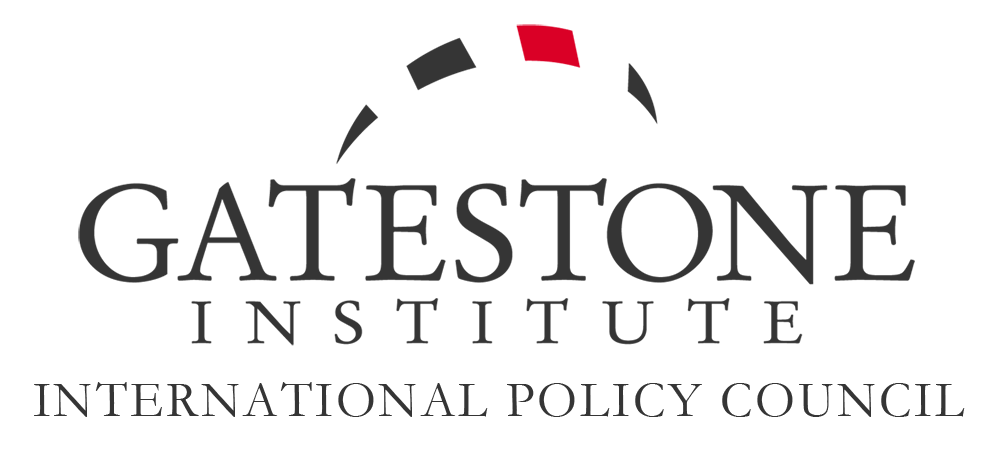 30 stycznia izraelskie siły bezpieczeństwa zlokalizowały i zabiły trzech palestyńskich terrorystów ukrywających się w szpitalu specjalistycznym Ibn Sina w Dżeninie. Terroryści planowali atak na Izraelczyków inspirowany masakrą Hamasu 7 października 2023 r. Na zdjęciu: Uzbrojeni terroryści maszerują w Dżeninie 20 stycznia 2024 r. (Zdjęcie: Zain Jaafar/AFP via Getty Images)
30 stycznia izraelskie siły bezpieczeństwa zlokalizowały i zabiły trzech palestyńskich terrorystów ukrywających się w szpitalu specjalistycznym Ibn Sina w Dżeninie. Terroryści planowali atak na Izraelczyków inspirowany masakrą Hamasu 7 października 2023 r. Na zdjęciu: Uzbrojeni terroryści maszerują w Dżeninie 20 stycznia 2024 r. (Zdjęcie: Zain Jaafar/AFP via Getty Images)

Palestyńscy terroryści, szpitale i perspektywy państwa palestyńskiego
Bassam Tawil
Tłumaczenie: Andrzej Koraszewski
Szpital Specjalistyczny Ibn Sina to jedna z kilku placówek medycznych w mieście Dżenin na Zachodnim Brzegu, które znajduje się pod wyłączną kontrolą Autonomii Palestyńskiej (AP). W związku z tym szpital działa na podstawie licencji wydanej przez Ministerstwo Zdrowia AP.
30 stycznia izraelskie siły bezpieczeństwa znalazły i zabiły trzech palestyńskich terrorystów ukrywających się w szpitalu. W oświadczeniu wydanym przez wspieraną przez Iran grupę Hamas zidentyfikowano trzech terrorystów jako Mohammeda Walida Dżalamneha oraz braci Mohammeda i Basela al-Ghazawi. Al-Dżalamneha opisano jako dowódcę zbrojnego skrzydła Hamasu, Brygad Izaddin al-Kassam, podczas gdy Palestyńczycy określili obu braci jako mudżahedinów (świętych wojowników) należących do Hamasu i Palestyńskiego Islamskiego Dżihadu, kolejnej wspieranej przez Iran palestyńskiej terrorystycznej grupy.
Trzej terroryści nie przybyli do szpitala po pomoc medyczną lub w celu odwiedzin chorych krewnych. Ukrywali się w szpitalu przez kilka tygodni, bo wiedzieli, że poszukają ich izraelskie siły bezpieczeństwa. Natomiast Izraelczycy nie szukali ich, ponieważ nie zapłacili rachunków za prąd i wodę.
Według władz izraelskich terroryści planowali atak inspirowany masakrą Hamasu z 7 października 2023 r., podczas której zamordowano 1200 osób, ścinając głowy, gwałcąc, kalecząc i paląc ludzi żywcem. Dżalamneh, zlikwidowany przywódca komórki terrorystycznej, był wcześniej ranny podczas przygotowywania samochodowego ataku bombowego. Utrzymywał kontakt z funkcjonariuszami Hamasu za granicą, prawdopodobnie w Katarze, Libanie i Turcji, i dostarczał broń innym terrorystom w ramach przygotowań do ataków na Izraelczyków. Dżalamneh był także rzecznikiem Brygad Izaddin al-Kassam w rejonie Dżenin i często pojawiał się w mundurze wojskowym i w masce, aby czytać oświadczenia swojej grupy.
Obecność w szpitalu bojowników Hamasu i Palestyńskiego Islamskiego Dżihadu nie zaskoczyła tych, którzy śledzili i dokumentowali wykorzystywanie szpitali przez palestyńskie grupy terrorystyczne jako bezpiecznego schronienia i bazy dla ich działalności. Od początku obecnej wojny między Hamasem i Izraelem potwierdzono, że szpitale są preferowanymi przez Hamas centralnymi miejscami działań terrorystycznych. Infrastruktura terrorystyczna w szpitalach ma zapewnić terrorystom optymalną ochronę w czasie wojny, poprzez wykorzystanie przestrzegania przez Izrael praw konfliktów zbrojnych i unikanie przeprowadzania ataków na szpitale i inne miejsca, takie jak szkoły i meczety, które są chronione na mocy Konwencji Genewskich (chyba że są wykorzystywane do celów wojskowych; a wtedy nie są już chronione).
Izraelskie Siły Obronne (IDF) udokumentowały konsekwentną i systematyczną metodę działania grup terrorystycznych.
Nad ziemią, na poszczególnych piętrach szpitalnych budynków, obok normalnych oddziałów, które istnieją w każdym szpitalu, organizacje terrorystyczne przechowują broń i sprzęt wojskowy. Wśród broni znalezionej w szpitalach znalazły się granaty ręczne, materiały wybuchowe i RPG (granaty o napędzie rakietowym).
Dowódcy oddziałów terrorystów Hamasu przebywają w szpitalach w czasie wojny, nawet korzystając z oddziałów intensywnej terapii, gdzie w razie potrzeby przebierają się za “pacjentów” lub personel medyczny.
W podziemiach szpitali, obok biur terrorystów, znajdują się wyjścia łączące z podziemną infrastrukturą operacyjną oraz z centrami dowodzenia i kontroli Hamasu, infrastrukturą komunikacyjną i urządzeniami technologicznymi.
Pod kompleksami szpitalnymi w Gazie znajduje się podziemna sieć tuneli terrorystycznych prowadzących ze szpitali do pobliskich baz terrorystycznych.
Na terenie szpitali IDF odkryła pojazdy załadowane bronią, w tym w szpitalu Al-Shifa w Gazie, a także tunele operacyjne pod szpitalami przeznaczone do zasadzek na żołnierzy IDF. Ponadto Hamas celowo umieścił infrastrukturę terrorystyczną w pobliżu szpitali, przy założeniu, że Izrael będzie starał się unikać obierania za cel tych lokalizacji, ponieważ mogłoby to zostać przedstawione jako atak na same szpitale.
Ahmad Kahalot, dyrektor szpitala Kamal Adwan w Gazie, przyznał, że Hamas zamienił szpitale w kontrolowane przez siebie obiekty wojskowe. Podczas przesłuchania przez izraelską Agencję Bezpieczeństwa Kahalot ujawnił, jak Hamas wykorzystuje szpitale do celów wojskowych, w tym do przechowywania broni, ukrywania swoich agentów i łączności dla członków Hamasu.
Hamas, powiedział Kahalot, przywiózł nawet schwytanego izraelskiego żołnierza do szpitala. Kahalot, aresztowany 12 grudnia 2023 r., powiedział, że należy do Hamasu od 2010 r.
“Zostałem zwerbowany do Hamasu w 2010 roku w stopniu generała brygady” – ujawnił podczas przesłuchania. “W szpitalu są pracownicy, którzy są agentami wojskowymi Brygad Izaddin al-Kassam – lekarze, pielęgniarki, ratownicy medyczni, urzędnicy i inni członkowie personelu”.
Według Kahalota członkowie Hamasu ukrywają się w szpitalach, które, jak wiedzą, są “chronione”. “Ukrywają się w szpitalach, ponieważ dla nich szpital jest bezpiecznym miejscem. Kiedy znajdą się w szpitalu, nie będą celem” – powiedział. “Znam 16 pracowników szpitala – lekarzy, pielęgniarki, ratowników medycznych i urzędników… którzy również zajmują różne stanowiska w Al-Kassam”.
Zaskakujące i rozczarowujące jest to, że wiele osób w społeczności międzynarodowej i mediach, w tym Światowa Organizacja Zdrowia (WHO), w dalszym ciągu ignoruje – a nawet zaprzecza lub tuszuje działania terrorystów w szpitalach.
Podczas niedawnej sesji z zarządem WHO ambasador Izraela Meirav Eilon Szahar powiedziała, że Hamas “jest osadzony w szpitalach”.
Szahar zauważyła, że “w każdym szpitalu, który IDF przeszukała w Gazie, znalazła dowody wojskowego wykorzystywania szpitala przez Hamas” . “Są to niezaprzeczalne fakty, które WHO raz za razem ignoruje. To nie jest niekompetencja, to zmowa”.
W Dżeninie terroryści znaleźli schronienie w szpitalu podlegającym Ministerstwu Zdrowia Autonomii Palestyńskiej. Można z dużą pewnością założyć, że wielu pracowników, w tym administracja specjalistycznego szpitala Ibn Sina, było świadomych obecności bandytów w jednej z sal dla pacjentów. Co zrobili administratorzy szpitali i lekarze, aby usunąć terrorystów ze szpitala? Nic. Co zrobiło Ministerstwo Zdrowia AP, aby mieć pewność, że terroryści zostali wydaleni ze szpitala? Nic.
AP, niewątpliwie świadoma obecności terrorystów w szpitalu, ma w Dżeninie wiele agencji bezpieczeństwa i wywiadu; są znani ze swojej silnej kontroli nad miastem. Czy rząd AP nakazał swoim funkcjonariuszom bezpieczeństwa usunięcie terrorystów ze szpitala w trosce o bezpieczeństwo personelu medycznego i pacjentów? NIE.
Zamiast potępiać Hamas i Palestyński Islamski Dżihad za przekształcenie szpitala w bezpieczną przystań dla terrorystów i wykorzystanie go jako bazy do planowania kolejnej masakry Izraelczyków, AP szybko potępiła Izrael za wyeliminowanie bandytów, którzy, nawiasem mówiąc, należą do dwóch grup sprzeciwiających się Autonomii Palestyńskiej. Premier AP Mohammad Sztajjeh oskarżył izraelskie siły bezpieczeństwa o “szturmowanie szpitali i przeprowadzanie egzekucji ma ich terenie na pacjentach, przy jednoczesnym zastraszaniu innych pacjentów i lekarzy”.
Zamiast podziękować izraelskim siłom bezpieczeństwa za pozbycie się terrorystów ukrywających się na terenie szpitala, Tawfik al-Szoubaki, dyrektor szpitala specjalistycznego Ibn Sina, również potępił akcję izraelskich sił bezpieczeństwa jako “niebezpieczny precedens”.
Wissam Subeihat, dyrektor służby zdrowia w Dżenin z ramienia Ministerstwa Zdrowia AP, potępił likwidację terrorystów jako “zbrodnię” i wezwał organizacje międzynarodowe do “pociągnięcia Izraela do odpowiedzialności”. Subeihat twierdził również fałszywie, że podczas akcji izraelscy żołnierze zaatakowali personel medyczny.
W świetle niechęci AP, jej ministerstwa zdrowia i palestyńskich sił bezpieczeństwa do wydalenia terrorystów ze szpitala w Dżenin, wydaje się, że plan administracji USA dotyczący sprowadzenia AP z powrotem do Strefy Gazy w celu zastąpienia Hamasu i utworzenia państwa palestyńskiego jest czymś więcej niż tylko głupotą.
Ponadto utworzenie państwa palestyńskiego bez zgody Izraela byłoby drastycznym naruszeniem Porozumień z Oslo. Nieprzerwane działania, a raczej bierność AP stanowią kolejny dowód na to, że wbrew temu, co uważa administracja USA, AP nie da się “zrewitalizować”. AP nigdy nie występowała jako partner pokojowy Izraela. Władze Autonomii nieustannie podżegały swój naród przeciwko Izraelowi i Żydom, zaprzeczając żydowskim powiązaniom religijnym z Izraelem, Jerozolimą i Wzgórzem Świątynnym, jednocześnie oskarżając Żydów o “bezczeszczenie ” islamskich świętych miejsc oraz prowadząc wojny dyplomatyczne i prawne w celu delegitymizacji i izolacji Izraela we wspólnocie międzynarodowej.
AP najwyraźniej nie ma zamiaru zmieniać swojej polityki gloryfikacji i finansowego nagradzania terrorystów. Przywódcy AP w dalszym ciągu wychwalają terrorystów jako “bohaterów” i odmawiają zaprzestania swojej polityki płacenia miesięcznych stypendiów Palestyńczykom, którzy mordują Żydów.
Incydent w Dżeninie jest kolejnym dowodem, że nie można ufać AP, iż będzie egzekwować prawo i porządek lub powstrzymywać terrorystów w Strefie Gazy, gdyby przekazano im tam władzę. Dziś Autonomia Palestyńska na Zachodnim Brzegu, nie robi nic, aby powstrzymać Hamas i innych terrorystów od kontynuowania swojej działalności mającej na celu mordowanie Żydów i unicestwienie Izraela. Nie ma żadnych dowodów na to, że w Gazie zachowałaby się inaczej. Wiele wskazuje na to, że wręcz przeciwnie.
Bassam Tawil jest muzułmańskim badaczem i publicystą mieszkającym na Bliskim Wschodzie.
Zawartość publikowanych artykułów i materiałów nie reprezentuje poglądów ani opinii Reunion’68,
ani też webmastera Blogu Reunion’68, chyba ze jest to wyraźnie zaznaczone.
Twoje uwagi, linki, własne artykuły lub wiadomości prześlij na adres:
webmaster@reunion68.com








